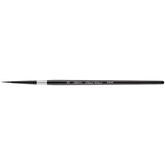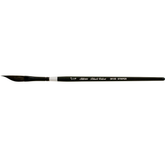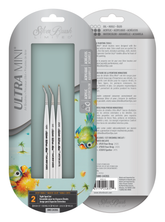
How to Choose the Right Brush
When it comes to creating art, choosing the right paint brush is just as important as selecting the right paint. The right brush can help you achieve cleaner lines, smoother blends, and more control over your medium—whether you're working with acrylics, oils, watercolors, or gouache.
In this guide, we’ll walk you through the different types of paint brushes, materials, and factors to consider when finding the perfect tools for your artistic style.
1. Understand Brush Types and Shapes
Each brush shape is designed to create specific effects. Knowing the differences helps you choose the right one for your technique:
-
Round Brushes – Ideal for detail, outlining, and controlled strokes.
-
Flat Brushes – Great for bold strokes, washes, and filling large areas.
-
Filbert Brushes – A combination of round and flat, perfect for blending and soft edges.
-
Fan Brushes – Used for blending, dry brushing, and creating texture (like foliage or clouds).
-
Detail or Spotter Brushes – Ultra-fine tips for tiny details and precision work.
2. Choose the Right Bristle Type
Brush bristles vary depending on the medium and the desired effect.
Natural Bristles:
-
Made from animal hair (e.g., hog, sable, squirrel).
-
Best for oil and acrylic paints.
-
Hold more paint and water, ideal for smooth blending and layering.
Synthetic Bristles:
-
Made from nylon or polyester.
-
Ideal for acrylics, watercolors, and gouache.
-
More durable and easier to clean, often more affordable.
3. Match the Brush to Your Medium
Each type of paint behaves differently—your brush should match its consistency and flow.
-
Watercolor: Soft bristles (natural or synthetic), round or mop brushes for water retention and smooth washes.
-
Acrylic: Medium-stiff synthetic bristles for control and durability.
-
Oil: Stiff natural bristles (like hog hair) that can move heavier paint.
-
Gouache: Soft, synthetic bristles with a sharp point or edge for precision and smooth application.
4. Consider Brush Size
Brushes are sized by numbers (#0, #2, #6, #10, etc.). The higher the number, the larger the brush.
-
Use small brushes (0–4) for detail work.
-
Use medium brushes (6–10) for general painting.
-
Use large brushes (12 and up) for washes and background areas.
5. Don’t Skimp on Quality
While it may be tempting to buy cheap brushes, investing in a few high-quality artist brushes will improve your work and last longer. Look for:
-
Well-shaped tips that retain their form.
-
Secure ferrules (the metal part holding the bristles).
-
Comfortable, balanced handles.
6. Try Before You Buy (If Possible)
If you can, test the brush. Check how it feels in your hand, how it snaps back into shape, and how it applies paint to a surface. Every artist has a preference—finding yours takes a little experimentation.
Final Thoughts: The Right Brush Elevates Your Art
Whether you’re a beginner or a seasoned artist, having the right brush for your medium and style can make all the difference. Take the time to understand your materials, try different shapes and bristles, and build a collection that suits your creative needs.
- Choosing a selection results in a full page refresh.






